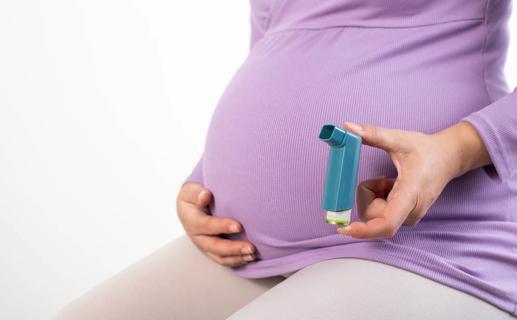Research may offer family-planning insights for those with the condition

Pregnant women with single ventricle (SV) physiology and Fontan palliation are at an elevated risk for sudden pregnancy loss (SPL). Specific clinical factors that contribute to the risk have not been well defined, however, which can create barriers for physicians and their SV patients contemplating pregnancy.
Advertisement
Cleveland Clinic is a non-profit academic medical center. Advertising on our site helps support our mission. We do not endorse non-Cleveland Clinic products or services. Policy
A study recently published in the journal Open Heart identifies for the first time three maternal factors contributing to SLP vulnerability among patients with SV physiology:
These insights can help clinicians better understand their patients’ specific risks and improve shared decision-making.
The research expands knowledge at a time when technology has extended the lives of individuals living with congenital heart defects, making questions about pregnancy and family planning relevant.
“About 2 million people in the U.S. have adult congenital heart disease, and half of these are women,” says cardiologist Joanna Ghobrial, MD, Medical and Interventional Director of Cleveland Clinic’s Adult Congenital Heart Disease Center. “These numbers are increasing because we are more able to get babies with these conditions to survive into adulthood.”
Dr. Ghobrial and Katherine Singh, MD, a maternal-fetal medicine specialist, collaborate in Cleveland Clinic’s Cardio-Obstetrics Clinic for patients with heart conditions who are pregnant or have pregnancy-related concerns. Cardiology subspecialists, maternal-fetal medicine subspecialists and patients meet in a combined visit for a better patient experience.
While the number of patients with pregnancy and SV physiology has grown, the literature hasn’t caught up, says Dr. Singh.
“There are not a lot of outcomes data, not only for clinicians but also for patients considering a future pregnancy,” she says. “Our objective is to share these insights and offer practical, evidence-based guidelines for clinicians managing pregnant patients with SV physiology.”
Advertisement
The retrospective study focused on Cleveland Clinic patients who were pregnant and had SV physiology between 2005 and 2023 and were seen by cardio-obstetrics specialists. A review of patient charts for the year prior to pregnancy provided baseline data. Other maternal health data included demographics, cardiac risk factors and congenital cardiac anatomy, medications and echocardiogram information. Liver disease associated with Fontan palliation was noted when confirmed through chart documentation, imaging or biopsy.
Pregnancies that ended in spontaneous miscarriage before 20 weeks gestation were determined to be SPL.
The study yielded:
Significantly higher odds of SPL were found among those with single right-ventricle morphology (OR 1.72 (95% CrI 1.0008–2.70)), moderate to severe atrioventricular valve regurgitation (OR 1.64 (95% CrI 1.003–2.71)) and reduced first-trimester oxygen saturation (OR 1.83 (95% CrI 1.03–2.71) for each percent decrease).
“In any Fontan patient, you have passive circulation that is completely dependent on passive flow from the venous system, which means you have high venous pressure,” says Dr. Ghobrial. “And, importantly, all these patients are living with a lower-than-normal cardiac output. When you add the hemodynamics of pregnancy, blood volume is doubling, and a heart that's already at maximal function has to double its work. Some more compensated single ventricle Fontan patients can actually increase their output to a certain extent, but others cannot. And that's where you get the increased risk of pregnancy loss, because they just cannot mount enough cardiac output to sustain a pregnancy.”
Advertisement
Patient particulars matter, however.
“There needs to be tailored therapy or tailored advice for each patient,” Dr. Ghobrial adds. “A compensated Fontan with good ventricular function, valve function and higher saturations can actually do far better in pregnancy than a decompensated Fontan patient.”
Among the most important implications from the research is that patient-practitioner communication and conversation is essential for optimal care. For some patients, there may be interventions that can reduce pregnancy-related risks.
“Historically, these women were told that they cannot and should not ever consider pregnancy,” says Dr. Ghobrial. “I think it needs to be clarified. For women with single ventricle physiology, pregnancy is high risk. But can we get them through it? Yes, we can.”
Additionally, patients require clear family-planning counseling. Historically, patients have often received inadequate options for contraception, or birth control counseling has been poorly relayed.
“We have seen patients who have been told ‘You can't get pregnant,’ and they thought it meant it wasn’t possible to become pregnant,” says Dr. Singh. “That's the worst case — where someone is not optimized for pregnancy, not counseled, thinks they can't get pregnant and then does. So how providers message out this is super important. They have to be very specific.”
Since thrombosis risks increase with hormonal contraception, Dr. Singh recommends referring patients to cardio-obstetrics if they are considering a future pregnancy and an obstetrician/gynecologist or complex family planning specialist if they want to discuss contraceptive options.
Advertisement
“Generally, outcomes for these patients are going to be better in a multidisciplinary cardio-OB system because we can actually tailor therapies far better,” adds Dr. Ghobrial. “We are far more comfortable with the anatomy and physiology of these patients. “
Finally, women with single-ventricle physiology should not be told that they cannot have children.
“That kind of absolutism has no place,” says Dr. Ghobrial. “There needs to be a discussion of risks, and then there needs to be a choice for the woman.”
Advertisement
Advertisement

Surveyed residents say they get little or no nutritional training

Newer drugs can affect likelihood of pregnancy

Comparing strategies for cesarean prophylaxis with penicillin allergy

A discussion of special care considerations before, during and after pregnancy

Why timely screening and treatment are needed

Prescribing eye drops is complicated by unknown risk of fetotoxicity and lack of clinical evidence

Rare pregnancy complication can lead to fetal demise

Largest study examines factors affecting asthma exacerbations during and after pregnancy